
–– The newsletter on wine and wine travel ––
–– Read by wine lovers and wine professionals all over the world ––
–– On the internet since 1996 ––
Focus on the environment in 2021, with carrot and stick
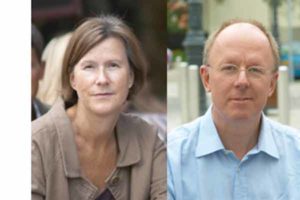 Predicting what will happen in 2021 is difficult. The only thing we can be sure of is that the environment and everything the wine producers can do to improve it will be on the agenda. Organic and sustainable viticulture will continue to increase. New, fungus-resistant grapes will appear, albeit on a microscopic scale to begin with. But we might as well start getting used to them
Predicting what will happen in 2021 is difficult. The only thing we can be sure of is that the environment and everything the wine producers can do to improve it will be on the agenda. Organic and sustainable viticulture will continue to increase. New, fungus-resistant grapes will appear, albeit on a microscopic scale to begin with. But we might as well start getting used to them
In 2020, France reduced the permitted amount of glyphosate (the active ingredient in most herbicides) quite radically. Many (conventional) winegrowers are upset. The discussions about how to change the work in the vineyard are likely to continue this year. However, there is still much debate about how dangerous glyphosate is, and it is unclear whether other countries will follow suit.
In 2019, the amount of copper for spraying against mildiou was reduced to 4 kilos per year and hectares (from 6 kg). It has been unclear, however, whether an equalization will be allowed or not, i.e. 28 kg per hectare and year over seven years. It was originally planned, but it has not happened. Such an equalization would make it easier to cope with challenging years. It will probably not be allowed, which means problems for some organic growers. But many continue to hope.
In 2020, sales of cheap wines increased worldwide. France lags behind. The country has not bothered to compete in the low-price market. Probably the right decision. Others do it better and more successfully. But France had not expected that there would be a pandemic and that sales of more expensive wines would decrease.
Wine is a business for most people—something they make a living off. So price and profitability are often and lively discussed, as are government subsidies, EU subsidies and tax breaks. The pandemic makes it even more relevant.
In 2020, there has been a lot of talk in France about the prices of organic wines. They are increasing, which is positive, in a way. Organic farming often costs a little more. There has been a certain lack of supply of organic wine from specific regions. So organic growers are now wondering, what happens when the supply increases, will the prices fall again? Interesting question.
Right now the bulk price per tonneau (900 litres) is around 2000 euros for organic Bordeaux wine (i.e. 2.22 € per litre or 1.70 euros calculated per bottle) and about 900 euros for red conventional Bordeaux wine (1 € respectively 0.75 euro). Other regions also show a difference of between 1 and 2 euros per litre. Comparing bulk wine prices is a bit like comparing one kilo of organic tomatoes with 1 kilo of non-organic—a good illustration of the market.
A euro or so of difference is a lot, and of course, a motivation to convert to organic farming. But the more people who switch to organic, the greater the supply and perhaps prices and profitability will fall. Let us then hope that the converts see other benefits of organic farming.
But in practice, many producers go organic not primarily because organic wine sells better, but because they want to take care of their immediate environment and of their family and employees. Getting paid more is a positive side effect.
Some other important things to mention:
We are happy and proud to announce that we, Britt and Per, have been appointed experts for everything that has to do with wine for the Swedish National Encyclopedia (a bit like Encyclopaedia Britannica but Swedish). There are actually many articles about wine, so it will take some time to go through and do updates where needed. But it will be lots of fun.
Talking about facts and learning, you can learn a lot about wine in our “wine school”. We have collected articles that go a little more in-depth in a place where you can browse and read about most things in the wine world: BKWine’s wine school can be found here.
There is, for example, our series of articles on organic wine, natural wine, sustainable and biodynamic, as well as our series of articles on the most important world’s grape varieties (more to come).
And, of course, our wine tours
If everything goes in the right direction, then maybe we can resume our wine tours already this spring. We have planned two tours for the spring and thus hope that vaccination and everything else will go fast and well.
In the autumn, we hope that borders are easier to cross and that the will to travel is up and running again. We have tours planned for Bordeaux and Champagne. New this year is that you can combine these two regions for a fantastic 9-day wine tour in France.
The winter of 2022 is also an excellent opportunity to reconnect with wine travel. We, and maybe you as well, enjoy spending a few weeks of the winter in a slightly warmer country, so our winter program offers our three classic tours to the southern hemisphere:
Chile and Argentina with the spectacular journey across the Andes, Buenos Aires, Mendoza, Valparaíso and much more.
South Africa, where we cover all important wine regions, with some of the absolute top producers, not always so well known outside this beautiful country.
New Zealand, a journey of discovery from north to south where you get to experience that Kiwi means not only sauvignon blanc, but also many other lovely wines and a landscape that is more beautiful than the Hobbits.
So when the desire to travel comes back and the borders open, then you know that we are here and have the best wine tours planned for you.
Travel to the wine regions with those who specialize in wine travel and wine. Travel with BKWine.
Enjoy the Brief!
Britt & Per
If you appreciate what we do, you can help us:Tell your friends about the Brief or send it to them.
Like us and follow us on social media:
What’s on at BKWine Tours
BKWine is also one of the world’s leading wine tour operators. Here’s what we currently have on our scheduled wine tour program:
- Bordeaux, April 21-25, 2021
- Champagne, May 19-23, 2021
- Champagne and Bordeaux, September 23 – October 1 2021
- Champagne, September 23-27, 2021
- Bordeaux, September 27 – October 1, 2021
- Chile-Argentina, January 17-30, 2022
- South Africa, February 9-18, 2022
- New Zealand, March 10-25, 2022
We also make custom designed wine tours.
We’re different than most other wine tour operators. We are people who know wine inside out, who travel constantly in wine regions, who write award winning books about wine. Who do this out of passion. Our tours are different from others. More in wine tours: BKWineTours.com.
Read our books
We have written several wine books, ten at the last count. Unfortunately, only one of them has been translated to English; the others are (so far) only available in Swedish. This is the one that is available in English:
All our books are on wine, but on different subjects: wines of the Languedoc, wine growing and wine making, the wines of France, Tuscany, Bordeaux, Piedmont, Burgundy, Champagne. Several have won prestigious prizes and awards from Gourmand International, OIV and others. Read more on our wine books.
News from the world of wineWhat’s been happening in the world of wine recently. |
BKWine will be the subject-matter experts for “wine” at NE Nationalencyklopedin, the “Swedish Encyclopaedia Britannica”
We will start by going through what exists and see what most is in need of being updated. One sometimes has the impression that not much changes in the wine world, but it is not so. A lot is changing all the time and texts need to be constantly modernized. We are happy and proud to receive this assignment and to have been appointed subject-matter experts for wine by the National Encyclopedia! |
Bigger and bigger: Wine giant Gallo buys wine brands for 800 million USD
Gallo thus strengthens its position in this segment where they are already strong through, e.g. the bestseller Barefoot. Gallo was founded in 1933 by the brothers Ernest and Julio Gallo in Modesto, just east of San Francisco, where the company is still based. Over the years, Gallo has continuously bought vineyards and wine estates and has been firmly entrenched also in the premium sector since the 1990s through its Gallo Estate Wines and properties such as Pahlmeyer and Louis M. Martini in Napa, Columbia Winery in Washington, Talbott Vineyards, and many more. Read more: sfchronicle |
Organic certification in France, from 1% to 24%; which wine regions are leading the way? The ranking
Provence 24 %, Jura 21 %, Bergerac 19 %, Alsace 18 %, Rhône Valley 17 %, Roussillon 18 %, Touraine 15 %, Languedoc 13 %, Anjou-Saumur 12,5 %, Savoie 11 %, Burgundy 10 %, Centre-Loire (Sancerre etc) 10 %, Bordeaux 9 %, Beaujolais 6 %, Champagne 3 %, Cognac 1 %. Read more : agencebio Read: Our book on organic wine, biodynamics, natural wine, sustainability and other environmental aspects. Read more: our series of articles on organic wine, natural wine, sustainable and biodynamic. |
Despite enormous challenges, South Africa increased its wine exports in 2020
The country’s two emblematic grapes, chenin blanc and pinotage, increased their export values by 13% and 12% respectively. Chenin blanc is the largest single export variety with a volume in 2020 of 48.9 million litres. Sparkling Methode Cap Classique (MCC) increased by 17%. Well-deserved for this excellent sparkler. Although still a small segment for South Africa, the super-premium segment showed a 37% growth in volume. Read more wosa Travel: Come on a wine tour to South Africa with BKWine. |
Lower alcohol in wine without affecting taste, is it possible? Yes, with the right yeast
Research on lower alcohol content is not only conducted inside the laboratory. Also, the way you work in the vineyard affects the result and can lower the alcohol contents. It has to do with e.g. when you do the pruning, how you manage the canopy etc. By combining the work in the vineyard and the cellar, the researchers hope to achieve a 2% reduction of alcohol without changing the taste profiles and yields. Read more: vitisphere |
Torres urges wine producers to act for the climate
Recently, two new members have joined: Cullen Wines in Margaret River in Australia and Bodega Emina in Spanish Ribera del Duero. Biodynamic Cullen Wines is already firmly rooted in the IWCA’s philosophy. The estate has been carbon neutral since 2007 and carbon positive since 2019. Bodega Emina was the first Spanish wine estate to make carbon dioxide calculations for its wines, which among other things led to a reduction in the weight of the bottles. Read more: iwcawine Read: Our book on organic wine, biodynamics, natural wine, sustainability and other environmental aspects. |
French grape varieties increase their presence in the worldSome people call them international varieties, but they are, in fact, French. These have increased in the world’s vineyards, from 29% of the global vineyard area in 2000 to today’s 39%. Most significant is the increase in the United Kingdom, where French grape varieties have gone from just over 20% of the country’s area to over 75% (but on a small total acreage). The country’s great success with its sparkling wine has led to more champagne grapes being planted. New Zealand has the highest proportion of French grape varieties with 94%, hardly surprising considering the dominance of sauvignon blanc and pinot noir. In second place is Australia with almost 90%, then South Africa with 82%, Chile 81% (up from 69%), Great Britain 75%, Canada 75%, USA 72%. France appears only in 8th place (!) in the statistics with 62%. France has large areas with grapes of Spanish origin, such as grenache and carignan. Of the 32 countries included in the statistics, Portugal comes last with only 9% of French origin grapes, but up from 1% in 1990. Spain is second last with slightly higher figures, 10%, up from 2% in 2000. (Statistics from the University of Adelaide.) |
Champagne sells more than expected in 2020
Travel: Come to Champagne on a wine tour with BKWine. |
FeaturesArticles and features published on BKWine Magazine and on our wine travel blog and photography blog in the last month. |
Dievole launching a different type of super-tuscan
Read more in Åsa Johansson’s article on BKWine Magazine: Dievole in Tuscany makes a major investment in Bolgheri. |
A quick 101 on French wine regions
Read more in Britt’s article on BKWine Magazine, originally published on Forbes: A whirlwind vinous Tour de France through eleven French wine regions | Britt on Forbes. Travel: Come on a wine tour to France with BKWine. |
The truth about ”sustainable” wines
Read more in Britt’s article on BKWine Magazine: Sustainable wines, what is it? This is part seven in our series on organic wines, biodynamic, natural wines and sustainability. One of the most misunderstood terms is natural wines: here’s an explanation of what natural wine really is. |
Wines to celebrate with in 2021
Read more in Stuart George’s article on BKWine Magazine: Anniversary Vintage Wines for 2021, “Thus ends a of year of publick wonder and mischief to the nation”. |
When Texas saved the French wine industry from extinction
Read more in Britt’s article on BKWine Magazine, originally published on Forbes: Rootstocks, grafting and when French wine almost died but was saved by Texas | Britt on Forbes. Travel: Come on a wine tour to France with BKWine. |
The King of Stellenbosch: cabernet sauvignon
Read Britt’s article on BKWine Magazine, originally published on Forbes: Stellenbosch Cabernet Sauvignon, its time to shine | Britt on Forbes. Travel: Come on a wine tour to South Africa with BKWine. |
Is Priorat Spain’s most successful wine region? A 1998 prompts the question
Read more in Britt’s article on BKWine Magazine, originally published on Forbes: Priorat, a Spanish success story brought back to memory with a 1998 wine | Britt on Forbes. |
Wine ToursSome information on our current and future wine tours. Book a wine tour with the “world’s top wine tour operator” today (or when you feel like travelling to wine country). |
Champagne, learn everything about it from the winemakers themselves | wine tour
In Champagne, they have to stick to many rules, but still, they all have their own visions and thoughts about how to make the best champagne. The success that champagne has had since the 1960s is impressive. Even a challenging year like 2020, the region did better than feared on the international markets. Yes, the world loves champagne, but, on our tour, you will discover not just one champagne, but several different styles. And not just the “big and famous” houses that everyone knows but also the small independent and passionate growers. And you’ll get to know the secrets from the winemakers. We will enjoy fabulous champagne lunches and marvel at the pretty scenery of the vineyard slopes and the cosy villages of the region. And, of course, the stunning cellars where millions of bottles are ageing in silence. Join us for a bubbly and luxurious experience. Wine tour to Champagne, May 19-23, 2021 Wine tour to Champagne, September 23-27, 2021 In the autumn, we also offer a combined Champagne and Bordeaux wine tour. See more on this in a separate note. |
Bordeaux wines and chateaux, discover the original home of the prestigious globetrotter grapes | wine tour
Another three grapes are permitted in red Bordeaux wines: malbec, nowadays more famous in Argentina, petit verdot, which is getting more and more popular in the Médoc region, and carmenère. This last grape is almost totally gone from Bordeaux, only some 20 hectares remain, but, just as malbec, it has found a new home in South America. These grapes are now planted all over the world, but Bordeaux, with its vast vineyards and beautiful chateaux is the original home. Experience with us the grapes, prestigious wines, luxurious chateaux lunches and lovely people in magnificent Bordeaux. Wine tour to Bordeaux, April 21-25 Wine tour to Bordeaux, September 27 – October 1 In the autumn, we also offer a combined Bordeaux and Champagne wine tour. See more on this in a separate note. |
Champagne and Bordeaux combined: two regions with centuries of history and glamour | wine tour
In Champagne we will meet with some of the very best independent growers. They will show is the cellars where millions of bottles rest, waiting to be released. And we will enjoy some fabulous 100% champagne lunches. Arriving in Bordeaux with the high-speed TGV train we will stay in this perhaps most elegant of all French cities. We’ll take you on a journey to the Left Bank with its grand chateaux and to the Right Bank with amazing family wineries. On the way you’ll enjoy some top-class gastronomic meals in the privacy and luxury of some of the chateaux. Join us and discover two unique and classic French wine regions. Wine tour to Champagne and Bordeaux, September 23 – October 1, 2021, |
The wine tour to Argentina and Chile; from tango in Buenos Aires, across the Andes, to Valparaíso, with wine and food
At the foot of the mighty Andes lies Mendoza, Argentina’s largest wine region, with 75% of the country’s vineyards. Here, it is dry and hot and malbec, as well as other grapes, thrives. And we will do the same during our meetings with exciting winemakers and our delicious lunches with the famous meat and fine vegetables on the grill. From Mendoza we take the bus across the Andes. In the middle of the mountainous wilderness lies the border between Argentina and Chile. Once inside Chile, we travel across the narrow country, only 150 km wide (but 4,000 kilometres long), to the Pacific coast and the beautiful city of Viña del Mar. We visit the coastal districts of Casablanca and San Antonio and then continue further south, to Colchagua. We stay in the charming small town of Santa Cruz. The tour starts with a couple of days in Buenos Aires and we end in the Chilean capital Santiago. Wine tour to Chile-Argentina, January 17-30, 2022. Book your tour to South America now! |
350 years of wine history, mixed with spectacular landscapes and delicious wines | the wine tour to South Africa
Today, South Africa is one of the most exciting wine countries. It is well on its way to completely abandoning the old focus on volume. Today, old rediscovered vineyards with, for example, grenache and cinsault are tenderly cared for. Talented winemakers place great emphasis on elegance and character of origin. Rightly so, it is a wine country with great variation in climate and growing conditions at short distances. When here, you will discover that they make incredibly good wines but many that you can hardly find outside the country’s borders (but here they sell at sometimes ridiculously low prices). Come with us to this beautiful country. On the tour, we cover both Cape Town and all the most important wine districts, including a few days in one of South Africa’s most charming coastal towns. Wine tour to South Africa, 9-18 February 2022. Book your trip to South Africa now! |
The wine country stretching from the tropics to cool climate, the wine tour to New Zealand
Our journey through this country far away takes us both to the most important wine regions and to breath-taking experiences of the “Kiwi” natural wonders. We begin in the north where the climate is almost tropical. We cover all the main wine districts, and will meet many welcoming wine producers along the way. We take the ferry between the North Island and the South Island and if we are lucky we will see dolphins. Even if there are no dolphins, we can guarantee seals sightings just before the lunch break when we enjoy the New Zealand lobster. A fantastic adventure awaits you. Wine tour to New Zealand, March 10-25, 2022. Book your trip to New Zealand now! |


 BKWine, or more precisely Britt and Per, have been appointed subject-matter experts or, if you like, subject-matter managers for all that relates to wine at the Nationalencyklopedin, the Swedish National Encyclopedia NE. You can in many ways compare Nationalencyklopedin with the Encyclopaedia Britannica and see it as a Swedish version of it. It is widely used in national education. This means that all articles that have to do with wine will be reviewed by us and the texts will in future be written by us. We take over responsibility from Urban Laurin, who has had it for almost thirty years. There is an impressively large number of articles that deal with wine in the National Encyclopaedia, everything from (relatively) technical articles, to wine regions, rules and much more.
BKWine, or more precisely Britt and Per, have been appointed subject-matter experts or, if you like, subject-matter managers for all that relates to wine at the Nationalencyklopedin, the Swedish National Encyclopedia NE. You can in many ways compare Nationalencyklopedin with the Encyclopaedia Britannica and see it as a Swedish version of it. It is widely used in national education. This means that all articles that have to do with wine will be reviewed by us and the texts will in future be written by us. We take over responsibility from Urban Laurin, who has had it for almost thirty years. There is an impressively large number of articles that deal with wine in the National Encyclopaedia, everything from (relatively) technical articles, to wine regions, rules and much more.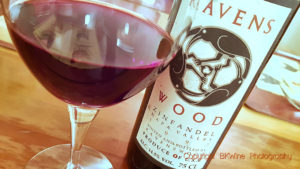 The world’s largest wine producer, the American company Gallo, has become even larger. Recently, Gallo acquired US$ 810 million worth of wine brands from Constellation, another wine colossus. The 30 brands include well-known Ravenswood and Clos du Bois. The majority, however, are brands in the low-price segment, which in the US means 11 USD or less.
The world’s largest wine producer, the American company Gallo, has become even larger. Recently, Gallo acquired US$ 810 million worth of wine brands from Constellation, another wine colossus. The 30 brands include well-known Ravenswood and Clos du Bois. The majority, however, are brands in the low-price segment, which in the US means 11 USD or less.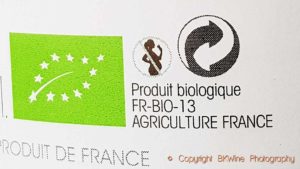 It is interesting to look at the statistics showing how big a portion of the different wine regions in France is organically certified. The differences between the regions are partly due to climate and weather and partly due to the demand. Cognac’s meagre result reflects both the humid Atlantic climate and the low demand for organic cognac. So far, the market has been small also for organic champagne. Champagne is investing heavily in the HVE sustainability certification, which many see as an alternative to the organic label. The figures include vineyards under conversion.
It is interesting to look at the statistics showing how big a portion of the different wine regions in France is organically certified. The differences between the regions are partly due to climate and weather and partly due to the demand. Cognac’s meagre result reflects both the humid Atlantic climate and the low demand for organic cognac. So far, the market has been small also for organic champagne. Champagne is investing heavily in the HVE sustainability certification, which many see as an alternative to the organic label. The figures include vineyards under conversion.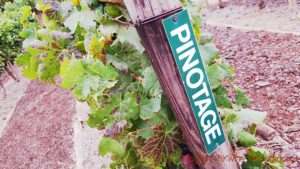 Despite major challenges (sales ban, export ban) for the South African wine industry in 2020, exports ended up at a phenomenal 319.2 million litres (3.2 Mhl). The vineyards have recovered well after the severe drought of 2015–2019. Even more gratifying is that the value of exports increased by 7.7%. Four countries showed extra good value increases: Great Britain +28%, the Netherlands +19%, Sweden +17% and the USA +12%.
Despite major challenges (sales ban, export ban) for the South African wine industry in 2020, exports ended up at a phenomenal 319.2 million litres (3.2 Mhl). The vineyards have recovered well after the severe drought of 2015–2019. Even more gratifying is that the value of exports increased by 7.7%. Four countries showed extra good value increases: Great Britain +28%, the Netherlands +19%, Sweden +17% and the USA +12%.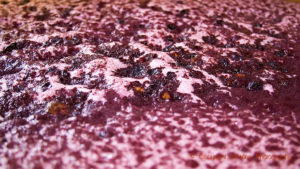 Researchers continue to search for suitable yeasts that produce lower alcohol. Such yeast has already been identified, but a side effect is higher levels of glycerol in the wine, which is not always desirable. L’Institut Français de la Vigne et du Vin (IFV), a research institute, says that a non-Saccharomyces yeast, Kluyveromyces thermotolerance, can give both lower alcohol and lower pH (higher acidity), another significant advantage. And instead of glycerol, the yeast produces lactic acid. Experiments show that alcohol can be 1% lower with Kluyveromyces thermotolerance and that the pH can be reduced by 0.3 points.
Researchers continue to search for suitable yeasts that produce lower alcohol. Such yeast has already been identified, but a side effect is higher levels of glycerol in the wine, which is not always desirable. L’Institut Français de la Vigne et du Vin (IFV), a research institute, says that a non-Saccharomyces yeast, Kluyveromyces thermotolerance, can give both lower alcohol and lower pH (higher acidity), another significant advantage. And instead of glycerol, the yeast produces lactic acid. Experiments show that alcohol can be 1% lower with Kluyveromyces thermotolerance and that the pH can be reduced by 0.3 points.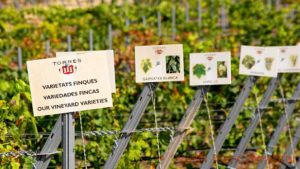 The International Wineries for Climate Action (IWCA) was founded in 2019 by the Torres family in Spain, long-time environmentalists, and the Jackson Family Wines in California. The purpose of the association is to make the wine industry aware of the urgency to address the effects of climate change. The aim is for IWCA members to reduce their greenhouse gas emissions by 50% by 2030 and to be climate positive by 2050. The first members were Alma Carraovejas (Spain), Silver Oak (USA), Spottswoode Estate (USA), Symington Family Estates (Portugal), VSPT Wine Group (Viña San Pedro Tarapacá, Chile) and Yealands Estate (New Zealand).
The International Wineries for Climate Action (IWCA) was founded in 2019 by the Torres family in Spain, long-time environmentalists, and the Jackson Family Wines in California. The purpose of the association is to make the wine industry aware of the urgency to address the effects of climate change. The aim is for IWCA members to reduce their greenhouse gas emissions by 50% by 2030 and to be climate positive by 2050. The first members were Alma Carraovejas (Spain), Silver Oak (USA), Spottswoode Estate (USA), Symington Family Estates (Portugal), VSPT Wine Group (Viña San Pedro Tarapacá, Chile) and Yealands Estate (New Zealand).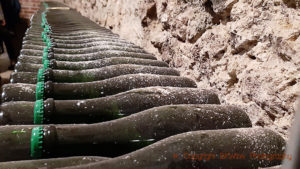 This is good news, among the bad, for the champagne industry. It turned out that people, after all, needed festive bubbles in the challenging year of 2020. Everybody thought that there would be a 30% reduction in sales in 2020, but it turned out to be a fall of only 18%. It was, not unexpectedly, the last months of the year that pulled up the numbers. However, both France and the three largest exporting countries drastically reduced their purchases; France, the United States and the United Kingdom decreased by 20% and Japan by 28%. The rescue came from (the rest of) Europe, which declined much less, and Australia, which actually increased by 14%. A total of 245 million bottles were sold. Typically, annual sales are around 300 million bottles. In the record year of 2007, 338 million bottles were sold.
This is good news, among the bad, for the champagne industry. It turned out that people, after all, needed festive bubbles in the challenging year of 2020. Everybody thought that there would be a 30% reduction in sales in 2020, but it turned out to be a fall of only 18%. It was, not unexpectedly, the last months of the year that pulled up the numbers. However, both France and the three largest exporting countries drastically reduced their purchases; France, the United States and the United Kingdom decreased by 20% and Japan by 28%. The rescue came from (the rest of) Europe, which declined much less, and Australia, which actually increased by 14%. A total of 245 million bottles were sold. Typically, annual sales are around 300 million bottles. In the record year of 2007, 338 million bottles were sold.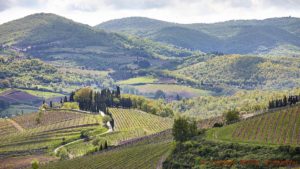 Alejandro Bulgheroni, one of the world’s wealthiest people, continues to expand his Italian wine empire, now with two vineyards in Bolgheri: Tenuta Meraviglia and Tenuta Le Colonne. His new venture in Bolgheri includes a new modern winery in a former quarry and new vineyards focusing on cabernet franc.
Alejandro Bulgheroni, one of the world’s wealthiest people, continues to expand his Italian wine empire, now with two vineyards in Bolgheri: Tenuta Meraviglia and Tenuta Le Colonne. His new venture in Bolgheri includes a new modern winery in a former quarry and new vineyards focusing on cabernet franc. France is not like Italy, where vines grow in every region. But France is not far behind. In fact, there are more vineyards in France than in Italy. France has 794 000 hectares of vineyards, a bit more than Italy’s 708 000 ha. And in virtually all other parts of France than the north-west, vineyards are abundant, from Champagne in the very north, to Languedoc-Roussillon on the border to Spain, from the Loire on the Atlantic coast in the west, to Provence in the east, bordering Italy. Join us on this whirlwind tour of all major wine regions of France.
France is not like Italy, where vines grow in every region. But France is not far behind. In fact, there are more vineyards in France than in Italy. France has 794 000 hectares of vineyards, a bit more than Italy’s 708 000 ha. And in virtually all other parts of France than the north-west, vineyards are abundant, from Champagne in the very north, to Languedoc-Roussillon on the border to Spain, from the Loire on the Atlantic coast in the west, to Provence in the east, bordering Italy. Join us on this whirlwind tour of all major wine regions of France.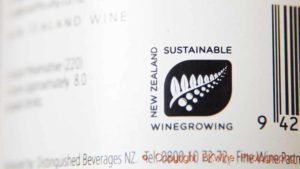 Making wine environmentally friendly is seen by many today as a matter of course. However, the extent to which producers are involved in the environment varies, not least depending on their financial situation. Sustainable viticulture can be seen both as an alternative and a complement to organic viticulture. Is it better, worse or just as good? The opinion is divided. Here we take a closer look at what sustainable viticulture means. What does it mean to be sustainable? One way of defining sustainability is to manage the natural resources, but in a way that does not jeopardize profitability.
Making wine environmentally friendly is seen by many today as a matter of course. However, the extent to which producers are involved in the environment varies, not least depending on their financial situation. Sustainable viticulture can be seen both as an alternative and a complement to organic viticulture. Is it better, worse or just as good? The opinion is divided. Here we take a closer look at what sustainable viticulture means. What does it mean to be sustainable? One way of defining sustainability is to manage the natural resources, but in a way that does not jeopardize profitability.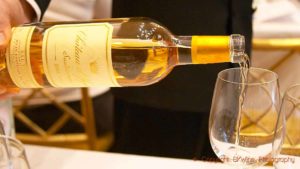 If 2021 will be a year for celebration for all of us remains to be seen. So far there is reason to be optimistic. It will certainly be an improvement from 2020. If you are celebrating something on a more personal level this year, birthday, wedding, or anything else, a good bottle of wine from the year when it all started (whatever it is) is a good choice. Stuart George, guest contributor and specialist in rare wines, goes through a number of options for celebration wines this year, from 10th anniversary 2011 to the 210th anniversary of the year of the comet 1811.
If 2021 will be a year for celebration for all of us remains to be seen. So far there is reason to be optimistic. It will certainly be an improvement from 2020. If you are celebrating something on a more personal level this year, birthday, wedding, or anything else, a good bottle of wine from the year when it all started (whatever it is) is a good choice. Stuart George, guest contributor and specialist in rare wines, goes through a number of options for celebration wines this year, from 10th anniversary 2011 to the 210th anniversary of the year of the comet 1811.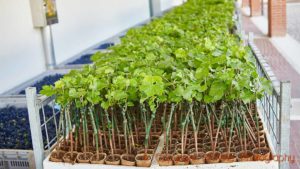 A successful and adventurous journey across the United States in the midst of the phylloxera crises in the 19th century helped save the French vineyards. Pierre Viala, a French botanist, had been sent to find a solution to the phylloxera crisis. He found it in Texas. Viala brought back home an American vine which seemed to thrive on the same type of calcareous soil found in Champagne and Cognac. He had discovered a rootstock that worked for these regions and many others.
A successful and adventurous journey across the United States in the midst of the phylloxera crises in the 19th century helped save the French vineyards. Pierre Viala, a French botanist, had been sent to find a solution to the phylloxera crisis. He found it in Texas. Viala brought back home an American vine which seemed to thrive on the same type of calcareous soil found in Champagne and Cognac. He had discovered a rootstock that worked for these regions and many others.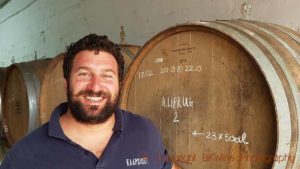 South Africa has a total of 92,000 hectares of vines. 10,000 hectares are cabernet sauvignon. It is the most planted red grape. The country’s most prominent wine region, Stellenbosch, is also the most important Cabernet region. More and more we hear winemakers voice the opinion that Stellenbosch cabernet deserves more attention. There’s now even an association to promote it. It is time to shine for Stellenbosch cabernet sauvignon. We talk to some of the leading winemakers.
South Africa has a total of 92,000 hectares of vines. 10,000 hectares are cabernet sauvignon. It is the most planted red grape. The country’s most prominent wine region, Stellenbosch, is also the most important Cabernet region. More and more we hear winemakers voice the opinion that Stellenbosch cabernet deserves more attention. There’s now even an association to promote it. It is time to shine for Stellenbosch cabernet sauvignon. We talk to some of the leading winemakers.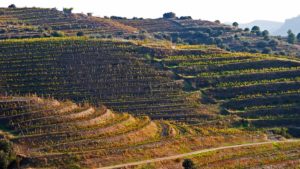 How do wine regions become internationally famous? Some, of course, have the advantage of having been known and appreciated for centuries, such as Bordeaux and Burgundy. It may seem impossible that other wine regions would reach the same standing. But it happens. A good example is Priorat in Spanish Catalonia. It languished for many years and almost disappeared. Then in the 1990s something happened that skyrocketed Priorat to fame. A wine from 1998 brought the memories back.
How do wine regions become internationally famous? Some, of course, have the advantage of having been known and appreciated for centuries, such as Bordeaux and Burgundy. It may seem impossible that other wine regions would reach the same standing. But it happens. A good example is Priorat in Spanish Catalonia. It languished for many years and almost disappeared. Then in the 1990s something happened that skyrocketed Priorat to fame. A wine from 1998 brought the memories back.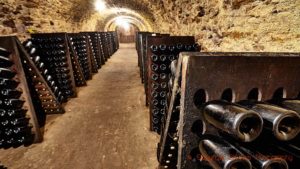 Many things have been said and written about Champagne. We all know various immortal quotes about this praised wine. Is it complicated to make champagne? The best way to find out is to come to the region with us and to hear the winemakers themselves explain.
Many things have been said and written about Champagne. We all know various immortal quotes about this praised wine. Is it complicated to make champagne? The best way to find out is to come to the region with us and to hear the winemakers themselves explain.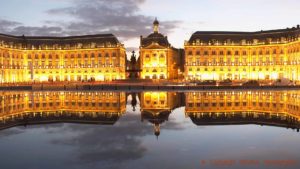 Bordeaux’s most famous grape variety is cabernet sauvignon, but actually, merlot is much more planted. Merlot is even the most planted variety in the whole of France. Both these grapes are often partnered with cabernet franc, a grape that adds freshness to the blend.
Bordeaux’s most famous grape variety is cabernet sauvignon, but actually, merlot is much more planted. Merlot is even the most planted variety in the whole of France. Both these grapes are often partnered with cabernet franc, a grape that adds freshness to the blend.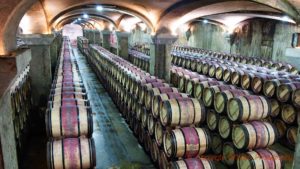 Now you can also experience two of France’s most prestigious wine regions on the same tour. It will be a magnificent 9-day tour of Champagne and Bordeaux. We start with four nights in Champagne, in the city of Reims, and continue with four nights in the beautiful city of Bordeaux.
Now you can also experience two of France’s most prestigious wine regions on the same tour. It will be a magnificent 9-day tour of Champagne and Bordeaux. We start with four nights in Champagne, in the city of Reims, and continue with four nights in the beautiful city of Bordeaux.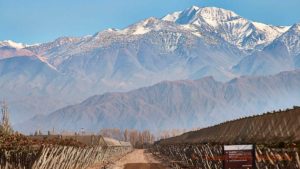 Two exciting wine countries in one big package, Chile and Argentina. A journey filled with wine, food, adventure and South American culture.
Two exciting wine countries in one big package, Chile and Argentina. A journey filled with wine, food, adventure and South American culture.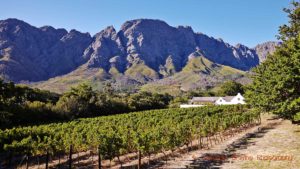 In South Africa, the first wine was made in the 17th century. As the only New World country, it became known for its quality wines in Europe as early as the 18th century. The wines were sweet and came from Constantia. South Africa’s second conquest of the wine world came after 1994. Exports have increased every year since then and consumers around the globe love the wines from South Africa.
In South Africa, the first wine was made in the 17th century. As the only New World country, it became known for its quality wines in Europe as early as the 18th century. The wines were sweet and came from Constantia. South Africa’s second conquest of the wine world came after 1994. Exports have increased every year since then and consumers around the globe love the wines from South Africa.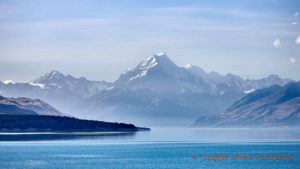 New Zealand, the newest of the New World countries, has some of the world’s southernmost wineries. And also the world’s easternmost vineyard, where the sun rises before all others. No vineyard is further than 120 km from the sea. The sunny days are long and the nights are cooled by the sea breeze. It is a climate that gives clear and distinct characters in the wines. We can see that very clearly in the sauvignon blanc wines but also in the wines from other grapes varieties.
New Zealand, the newest of the New World countries, has some of the world’s southernmost wineries. And also the world’s easternmost vineyard, where the sun rises before all others. No vineyard is further than 120 km from the sea. The sunny days are long and the nights are cooled by the sea breeze. It is a climate that gives clear and distinct characters in the wines. We can see that very clearly in the sauvignon blanc wines but also in the wines from other grapes varieties.




